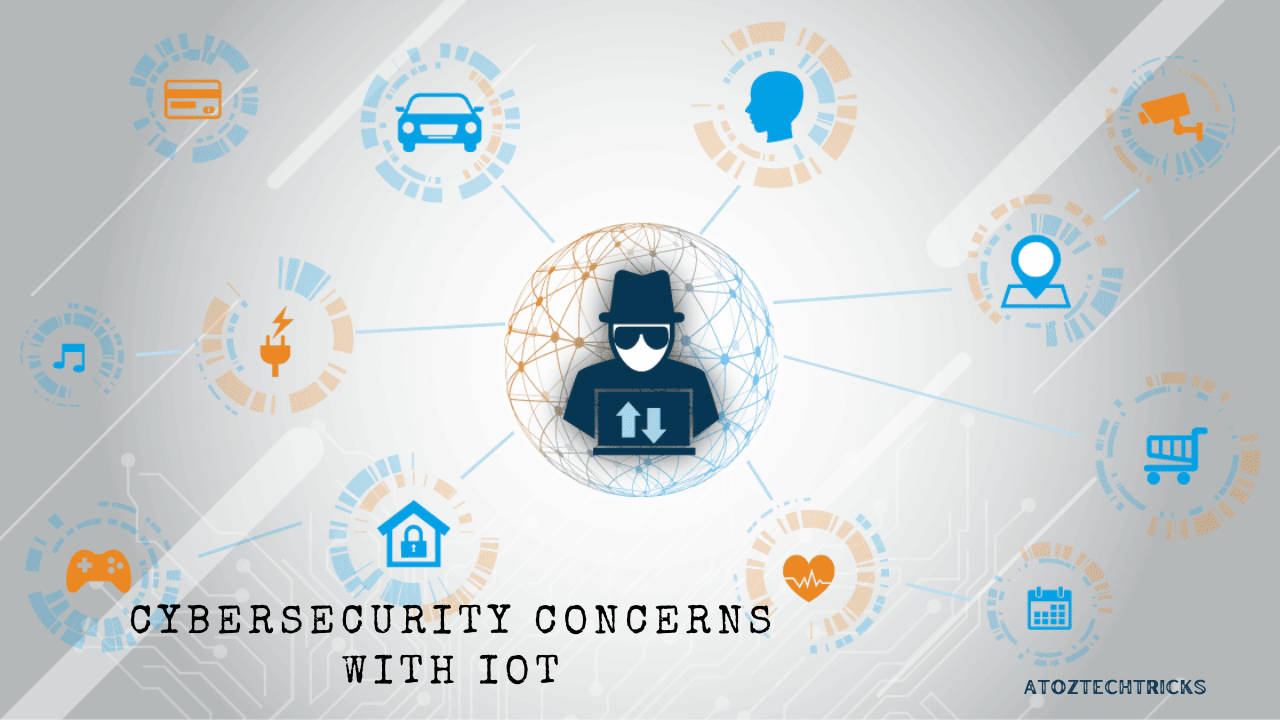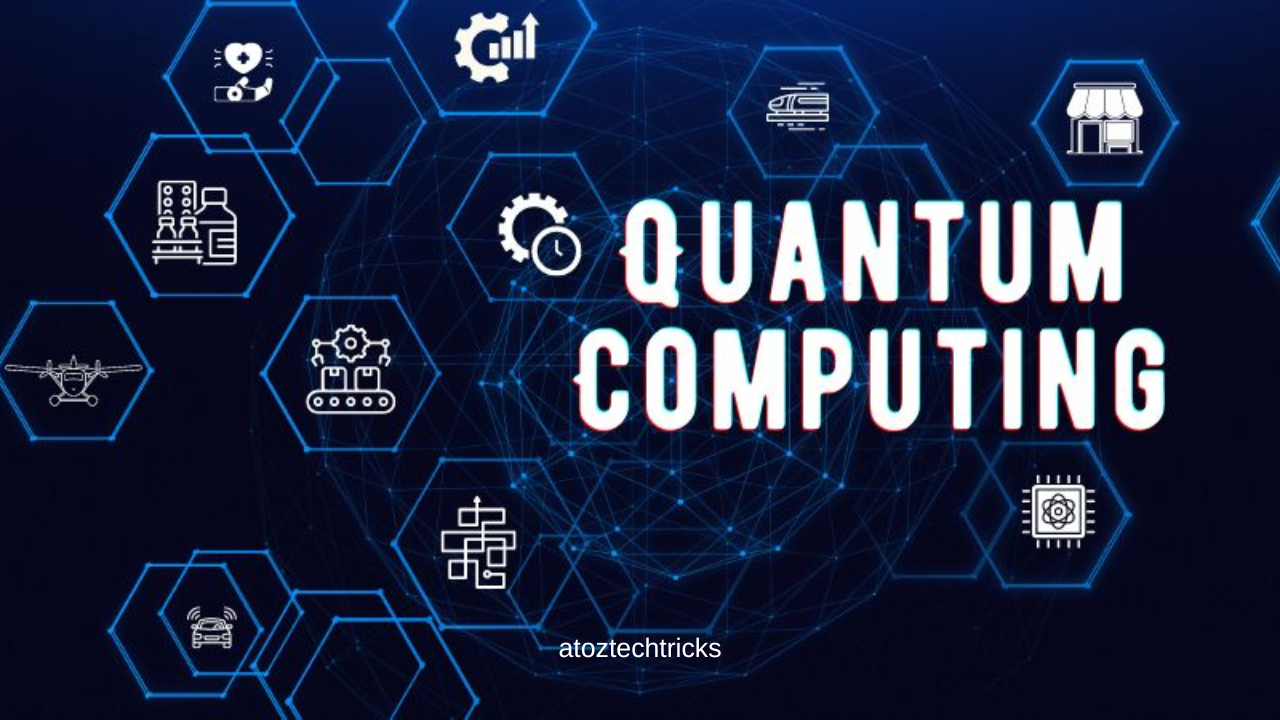Cybersecurity Concerns with IoT: Protecting the Connected World
The Internet of Things (IoT) represents a rapidly growing network of connected devices that are transforming industries, homes, and everyday life. From smart thermostats and wearable fitness trackers to industrial sensors and connected vehicles, IoT devices are becoming increasingly ubiquitous. As these devices communicate and share data across networks, they offer convenience, efficiency, and new capabilities that were once unimaginable. However, the widespread adoption of IoT also brings significant cybersecurity concerns that must be addressed to protect users, organizations, and critical infrastructures.
In this article, we will explore the various cybersecurity challenges associated with IoT, including vulnerabilities, attack vectors, and the potential impact of security breaches. We will also discuss best practices and strategies for mitigating these risks, ensuring that the benefits of IoT can be realized without compromising security.
Understanding the IoT Landscape
What is IoT?
The Internet of Things (IoT) refers to the network of physical objects—devices, vehicles, appliances, and more—that are embedded with sensors, software, and other technologies to connect and exchange data with other devices and systems over the Internet. These devices range from simple household items like smart refrigerators and light bulbs to complex industrial machines and healthcare devices.
The Internet of Things (IoT) in Smart Homes: Revolutionizing Modern Living
The Growth of IoT
The adoption of IoT has been nothing short of explosive. According to industry reports, the number of IoT devices worldwide is expected to surpass 25 billion by 2030. This growth is driven by advancements in wireless communication technologies, the decreasing cost of sensors and hardware, and the increasing demand for automation and smart solutions across various sectors.
The Potential and Risks of IoT
While IoT offers immense potential for innovation and efficiency, it also presents significant risks. The interconnected nature of IoT devices means that a vulnerability in one device can potentially compromise an entire network. The proliferation of IoT devices has also expanded the attack surface for cybercriminals, making it easier for them to find and exploit weaknesses.
Key Cybersecurity Concerns with IoT
1. Inadequate Security Measures
Many IoT devices are designed with convenience and cost-effectiveness in mind, often at the expense of security. Manufacturers may prioritize functionality over security, leading to devices with weak or hard-coded passwords, unencrypted data transmissions, and insufficient security updates. These vulnerabilities make IoT devices attractive targets for cybercriminals.
Case Study: In 2016, the Mirai botnet attack exploited insecure IoT devices, including cameras and routers, to launch a massive distributed denial-of-service (DDoS) attack that disrupted major websites and services. The attack highlighted the dangers of inadequate security measures in IoT devices.
2. Lack of Standardization
The IoT ecosystem is highly fragmented, with devices from different manufacturers often using proprietary communication protocols and standards. This lack of standardization makes it challenging to implement consistent security measures across all devices. It also complicates the integration and management of IoT networks, leading to potential security gaps.
Impact: Without standardized security protocols, IoT devices from different vendors may not be able to communicate securely, leaving them vulnerable to man-in-the-middle attacks, data breaches, and unauthorized access.
3. Privacy Concerns
IoT devices collect and transmit vast amounts of data, including personal and sensitive information. This data can be used to improve user experiences, optimize operations, and enable new services. However, it also raises significant privacy concerns, especially if the data is not adequately protected.
Examples: Smart home devices like voice assistants and cameras can capture audio and video data from users’ homes. If this data is accessed by unauthorized parties, it could lead to privacy violations, identity theft, and other malicious activities.
4. Physical Security Risks
Unlike traditional IT systems, IoT devices are often deployed in physical environments where they can be tampered with or stolen. Physical access to a device can allow attackers to bypass security measures, gain control of the device, and use it as an entry point into a network.
IoT in Healthcare: Revolutionizing Patient Care and Medical Systems
Example: In industrial settings, IoT devices like sensors and controllers are often installed in remote or unattended locations. If an attacker gains physical access to these devices, they could disrupt operations, cause equipment malfunctions, or compromise sensitive data.
5. Firmware and Software Vulnerabilities
IoT devices rely on firmware and software to operate and communicate with other devices. However, many IoT devices use outdated or insecure firmware, making them susceptible to exploitation. Additionally, manufacturers may not provide regular security updates or patches, leaving devices vulnerable to known threats.
Impact: Firmware vulnerabilities can be exploited by attackers to take control of IoT devices, alter their functionality, or use them as part of a larger botnet. In some cases, these vulnerabilities may not be discovered until after a device has been widely deployed, making it difficult to address the issue.
6. Insider Threats
Insider threats pose a significant risk to IoT security, especially in industrial and enterprise environments. Employees, contractors, or partners with access to IoT devices and networks may intentionally or unintentionally compromise security, either by misconfiguring devices, using weak passwords, or leaking sensitive information.
Impact: Insider threats can be particularly challenging to detect and mitigate, as they often involve individuals with legitimate access to systems. In some cases, insider attacks may go unnoticed for extended periods, leading to significant damage.
Common IoT Attack Vectors
1. Botnets
Botnets are networks of compromised devices that are controlled by attackers to perform coordinated actions, such as launching DDoS attacks or distributing malware. IoT devices are particularly susceptible to botnet attacks due to their widespread deployment, lack of security, and always-on nature.
Example: The Mirai botnet mentioned earlier is one of the most well-known examples of an IoT botnet. It targeted IoT devices with default or weak passwords, infecting them with malware and using them to launch massive DDoS attacks.
2. Ransomware
Ransomware is a type of malware that encrypts a victim’s data or locks them out of their devices until a ransom is paid. While ransomware attacks have traditionally targeted computers and servers, IoT devices are increasingly becoming targets.
Example: In 2020, researchers demonstrated a proof-of-concept ransomware attack on a smart thermostat, where the attacker was able to lock the device and demand a ransom for its release. Such attacks could potentially spread to other connected devices within a network.
3. Man-in-the-Middle (MitM) Attacks
In a MitM attack, an attacker intercepts and alters the communication between two devices without their knowledge. IoT devices, especially those using unencrypted or weakly encrypted communication protocols, are vulnerable to MitM attacks.
Impact: A successful MitM attack could allow the attacker to eavesdrop on sensitive data, inject malicious commands, or manipulate the behaviour of IoT devices. This could have serious consequences in critical infrastructure, such as healthcare or industrial control systems.
4. Distributed Denial of Service (DDoS) Attacks
DDoS attacks involve overwhelming a target system or network with a flood of traffic, rendering it unavailable to legitimate users. IoT devices can be used as part of a botnet to launch DDoS attacks, as they often lack the processing power and security measures to defend against such attacks.
Example: In 2016, the Dyn DDoS attack, powered by the Mirai botnet, took down major websites and services, including Twitter, Netflix, and PayPal. The attack was fueled by millions of compromised IoT devices.
5. Side-Channel Attacks
Side-channel attacks exploit information leaked from a device during its normal operation, such as power consumption, electromagnetic emissions, or timing information. IoT devices, particularly those with limited processing power, may be vulnerable to side-channel attacks.
Impact: Side-channel attacks can be used to extract sensitive information, such as encryption keys, from IoT devices. This information can then be used to compromise the device or other systems it communicates with.
Comprehensive Guide to Physical Health: Key Strategies for a Healthier Life
The Impact of IoT Security Breaches
1. Economic Losses
The economic impact of IoT security breaches can be substantial, affecting both individuals and organizations. Businesses may face direct financial losses from disrupted operations, ransom payments, or legal liabilities. In addition, the loss of customer trust and damage to brand reputation can result in long-term financial consequences.
Example: A security breach in a connected car system could lead to a recall of vehicles, costing the manufacturer millions of dollars in repairs, compensation, and legal fees.
2. Privacy Violations
IoT security breaches can lead to the exposure of personal and sensitive information, resulting in privacy violations. This can include data such as location information, health records, financial transactions, and even video or audio recordings from smart devices.
Impact: Privacy violations can have serious repercussions, including identity theft, blackmail, and reputational damage. In some cases, the exposure of sensitive information could also lead to legal action against the company responsible for the breach.
3. Safety and Health Risks
In certain industries, IoT security breaches can pose significant safety and health risks. For example, a cyberattack on a connected medical device could lead to incorrect treatment or medication dosages, putting patients’ lives at risk. Similarly, an attack on industrial control systems could result in hazardous conditions or environmental damage.
Example: In 2019, the FDA issued a warning about cybersecurity vulnerabilities in certain medical devices, including insulin pumps and pacemakers, that could be exploited to alter their function or disable them entirely.
4. National Security Threats
IoT security breaches can also have implications for national security, particularly when they target critical infrastructure. Attacks on power grids, transportation systems, or military networks could disrupt essential services, cause widespread chaos, and undermine public confidence in government and industry.
Impact: Nation-state actors and cyber terrorists may target IoT devices as part of broader campaigns to destabilize countries or achieve geopolitical objectives. The potential for large-scale disruptions makes securing IoT devices a matter of national importance.
Best Practices for Securing IoT Devices
1. Implement Strong Authentication and Access Controls
One of the most effective ways to secure IoT devices is by implementing strong authentication and access controls. This includes using unique, complex passwords for each device, enabling multi-factor authentication (MFA), and limiting access to devices and networks to authorized users only.
Tip: Avoid using default or easily guessable passwords for IoT devices. Consider using password management tools to generate and store complex passwords.
2. Regularly Update Firmware and Software
Manufacturers should provide regular firmware and software updates to address security vulnerabilities and improve the overall security of IoT devices. Users should ensure that their devices are updated promptly to protect against known threats.
Tip: Enable automatic updates for IoT devices whenever possible, or set reminders to check for updates regularly.
3. Encrypt Data Transmission
To protect data transmitted between IoT devices and other systems, encryption should be used. This helps prevent unauthorized access to sensitive information and mitigates the risk of man-in-the-middle attacks.
Tip: Use strong encryption protocols, such as TLS (Transport Layer Security), to secure data in transit.
4. Monitor and Analyze Network Traffic
Monitoring and analyzing network traffic can help detect suspicious activity or potential security threats in real time. This includes setting up intrusion detection and prevention systems (IDPS) to identify and block malicious traffic.
Tip: Implement network segmentation to isolate IoT devices from other critical systems, reducing the impact of a potential breach.
5. Conduct Regular Security Audits
Regular security audits and assessments are essential for identifying and addressing vulnerabilities in IoT devices and networks. This includes penetration testing, vulnerability scanning, and reviewing security policies and procedures.
Tip: Work with third-party security experts to conduct independent audits and provide recommendations for improving IoT security.
6. Educate Users and Employees
User and employee awareness is a critical component of IoT security. Training programs should be implemented to educate users about the risks associated with IoT devices and best practices for securing them.
Tip: Develop clear guidelines for the secure use of IoT devices, including password management, data protection, and incident reporting procedures.
7. Implement Security by Design
Manufacturers should adopt a “security by design” approach when developing IoT devices. This involves integrating security features and best practices into the design and development process, rather than treating security as an afterthought.
Tip: Collaborate with cybersecurity experts during the design phase to identify potential risks and implement appropriate security measures.
The Future of IoT Security
1. Emerging Technologies
As IoT continues to evolve, emerging technologies such as artificial intelligence (AI) and blockchain hold promise for enhancing IoT security. AI can be used to detect and respond to security threats in real time, while blockchain can provide a decentralized and tamper-proof record of transactions and data exchanges between IoT devices.
Example: AI-powered threat detection systems can analyze patterns in network traffic to identify potential cyberattacks before they cause damage.
2. Industry Collaboration
Addressing IoT security challenges requires collaboration between manufacturers, regulators, industry groups, and cybersecurity experts. By working together, these stakeholders can develop and implement standardized security protocols, share threat intelligence, and promote best practices across the IoT ecosystem.
Impact: Industry collaboration can help create a more secure and resilient IoT landscape, reducing the risk of widespread security breaches and protecting users and organizations.
3. Regulatory Frameworks
Governments and regulatory bodies are increasingly recognizing the need for robust IoT security standards. In the coming years, we can expect to see the development of more comprehensive regulatory frameworks that mandate security measures for IoT devices and networks.
Example: The European Union’s General Data Protection Regulation (GDPR) and the California Consumer Privacy Act (CCPA) have already introduced requirements for data protection that impact IoT devices. Future regulations may focus specifically on IoT security.
The Internet of Things offers tremendous opportunities for innovation and efficiency, but it also introduces significant cybersecurity challenges. As IoT devices continue to proliferate, securing them against cyber threats is becoming increasingly critical. By understanding the key cybersecurity concerns associated with IoT and implementing best practices, individuals, organizations, and governments can mitigate the risks and ensure that the benefits of IoT are realized safely and securely.
The future of IoT security will depend on a combination of technological advancements, industry collaboration, and regulatory oversight. As the IoT landscape continues to evolve, it is essential to stay vigilant and proactive in addressing security concerns and protecting the connected world from emerging threats.






Post Comment